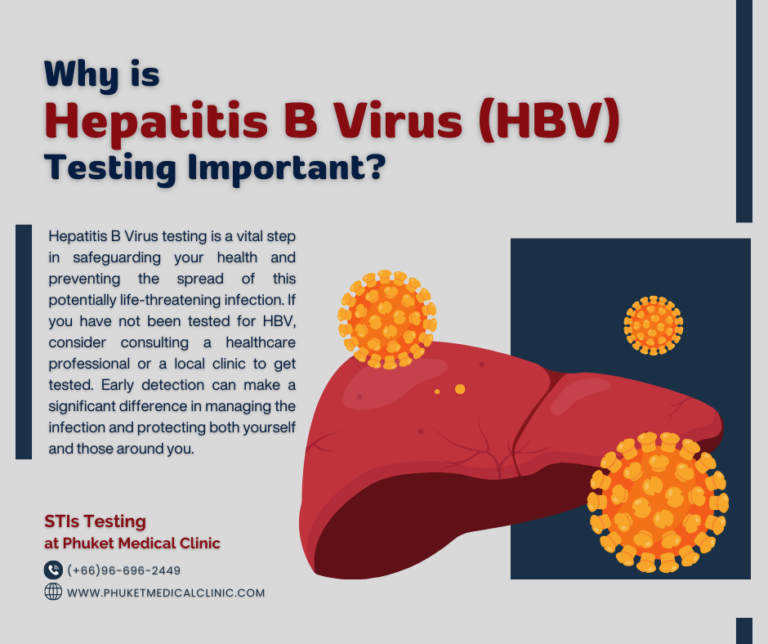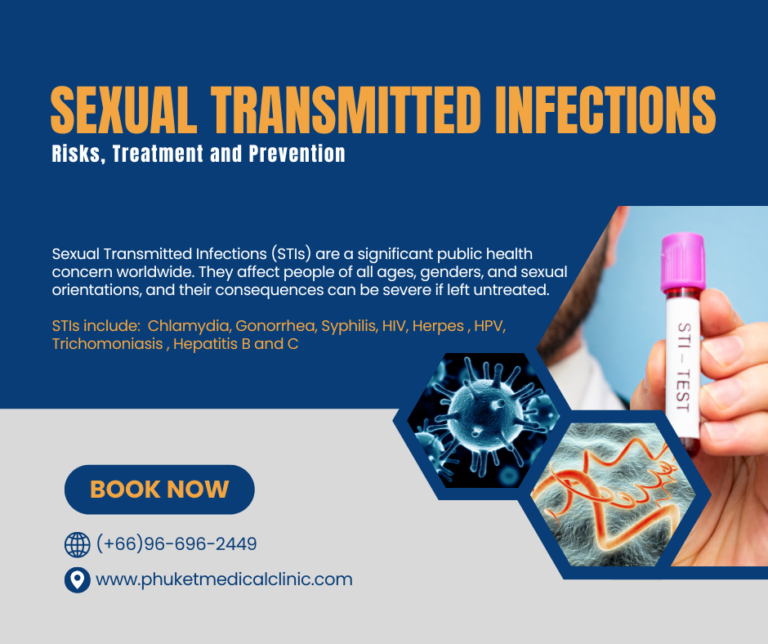What Is PEP?
PEP (Post-Exposure Prophylaxis) is an emergency treatment designed to prevent HIV infection after potential exposure. It involves taking antiretroviral medications for 28 days. PEP is most effective when started as soon as possible, ideally within 72 hours of exposure.
“Get PEP or PrEP Today – Schedule a Consultation”
Line : @pmcphuket
Whatapp : “Get PEP or PrEP Today – Schedule a Consultation”
When to Choose PEP:
- After unprotected sex or condom failure with an HIV-positive or unknown-status partner.
- After sharing needles or other drug equipment.
- Following occupational exposure (e.g., needle stick injuries for healthcare workers).
- After sexual assault or any incident where HIV exposure is a risk.
What Is PrEP?
PrEP (Pre-Exposure Prophylaxis) is a daily medication taken by individuals at high risk of HIV infection to prevent it before exposure. When taken consistently, PrEP reduces the risk of HIV from sexual contact by more than 99% and from injection drug use by at least 74%
When to Choose PrEP
- If you are in a relationship with an HIV-positive partner.
- If you have multiple sexual partners or engage in unprotected sex.
- If you are part of a high-risk group, such as men who have sex with men (MSM).
- If you frequently inject drugs or share needles.
- If you live in or travel to areas with high rates of HIV
Which Should You Choose?
The choice between PEP and PrEP depends on your circumstances:
Choose PEP If:
- You’ve had a recent potential exposure to HIV (e.g., within the last 72 hours).
- You need urgent, short-term protection.
Choose PrEP If:
- You’re at ongoing risk of HIV exposure due to your lifestyle or circumstances.
- You want a proactive, long-term prevention strategy.
If you’re unsure which option is right for you, our healthcare professionals can provide a personalized risk assessment and guide you in making an informed decision.
“Get PEP or PrEP Today – Schedule a Consultation”
Line : @pmcphuket
Whatapp : “Get PEP or PrEP Today – Schedule a Consultation”
Can I Use Both PEP and PrEP?
Yes, in certain situations, both treatments may be used. For instance:
- If you are currently on PrEP but missed several doses and had a highrisk exposure, PEP may be recommended.
- After completing a PEP regimen, transitioning to PrEP can provide
ongoing protection.
How We Can Help
At our clinic, we offer comprehensive HIV prevention services, including both PEP and PrEP. Our trained professionals provide:
- Confidential consultations to assess your risk.
- Immediate access to PEP for urgent cases.
- Guidance on starting and adhering to PrEP.
- Follow-up care and ongoing support.
Take Charge of Your Health
Your health is your priority, and we’re here to support you. Whether you need PEP, PrEP, or both, we’ll provide compassionate, confidential care tailored to your needs.
“Get PEP or PrEP Today – Schedule a Consultation”
Line : @pmcphuket
Whatapp : “Get PEP or PrEP Today – Schedule a Consultation”






